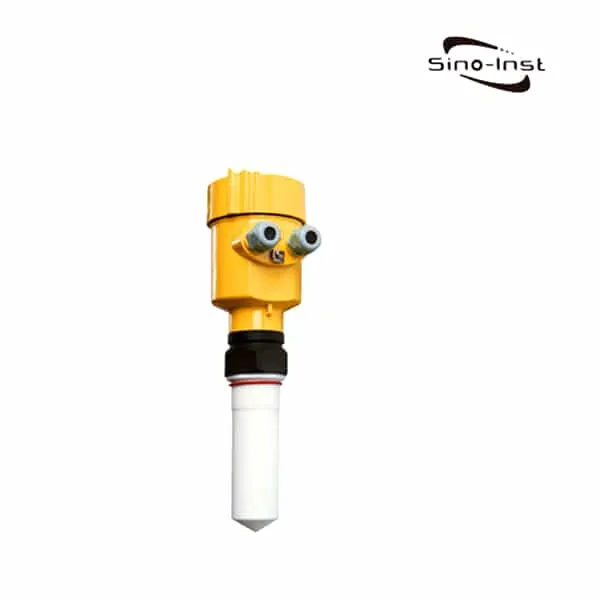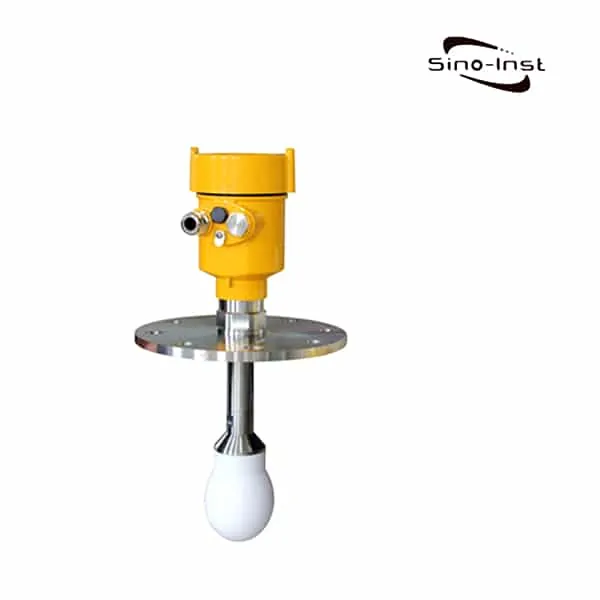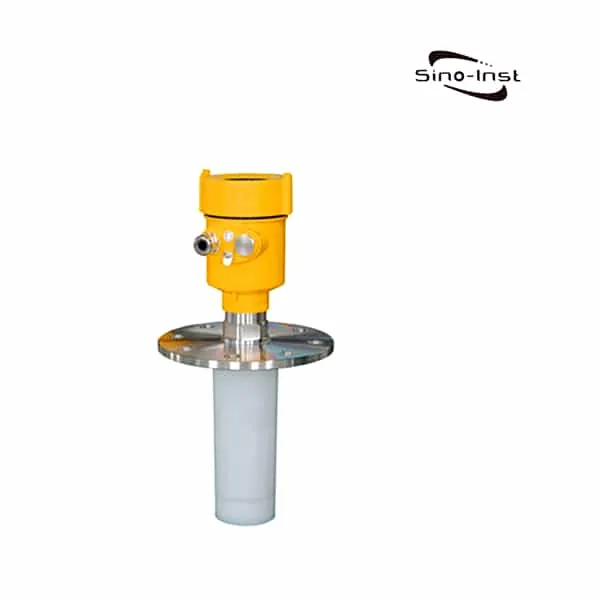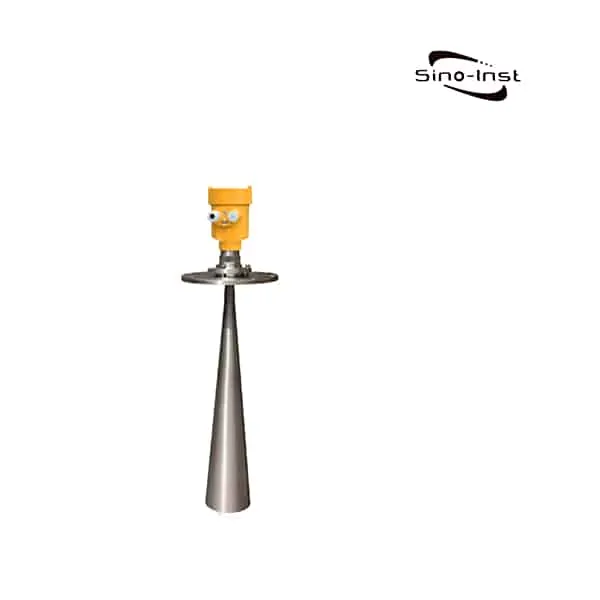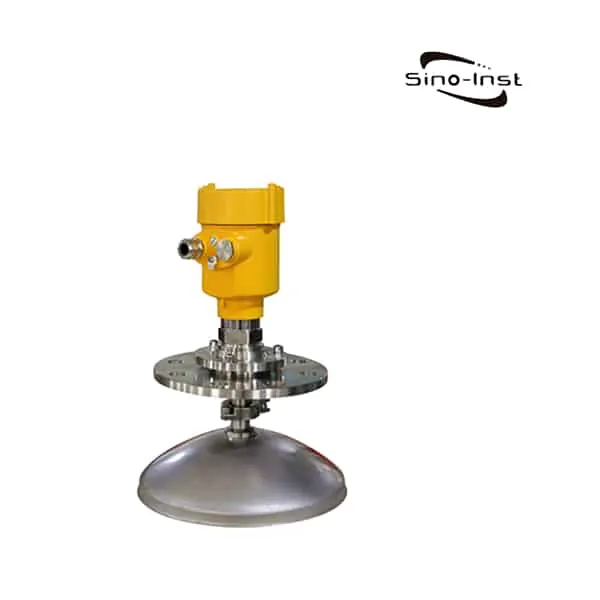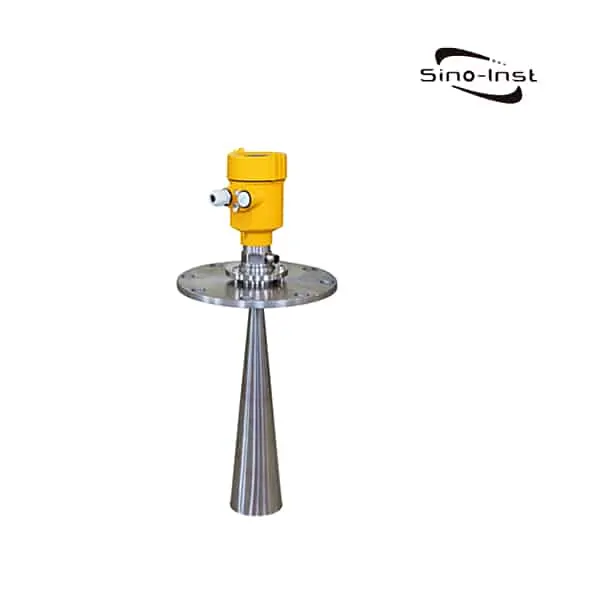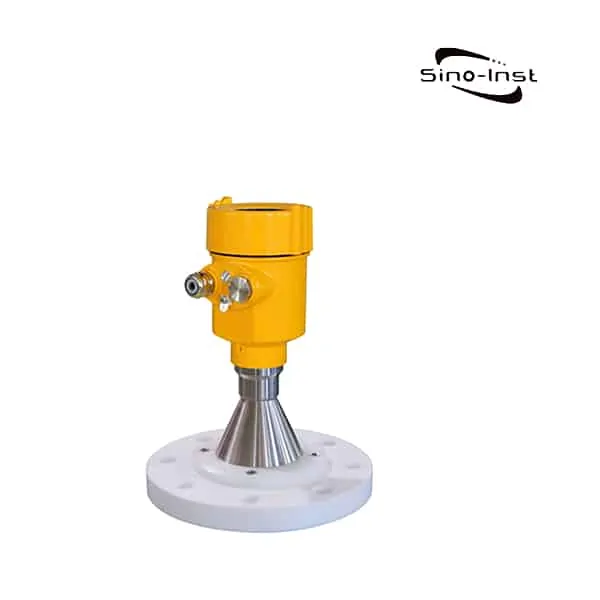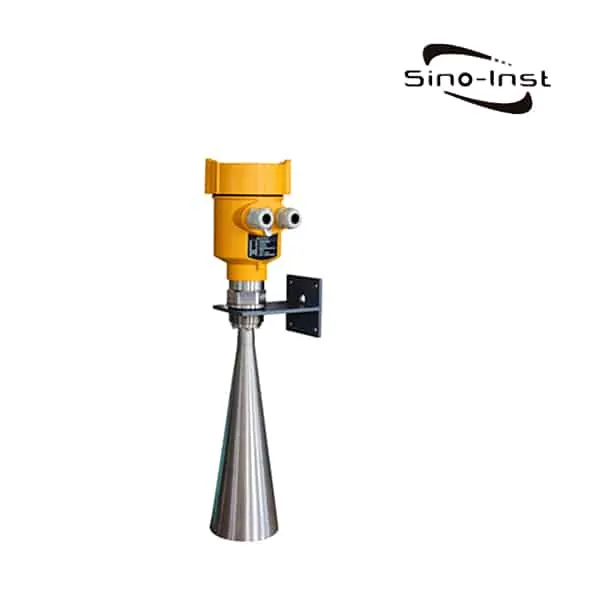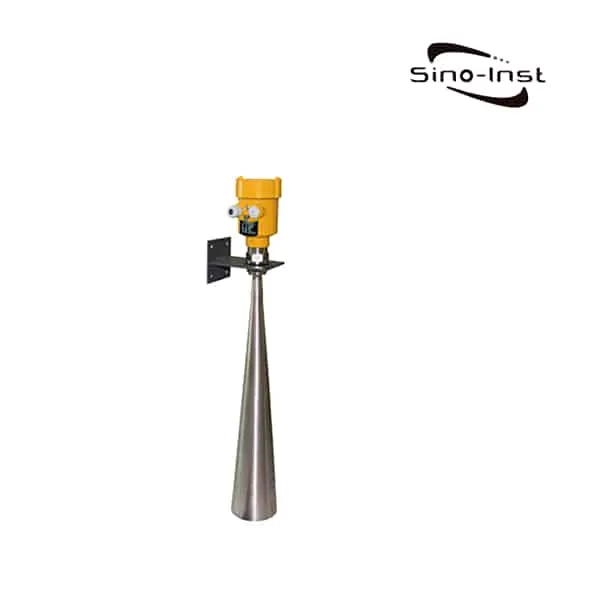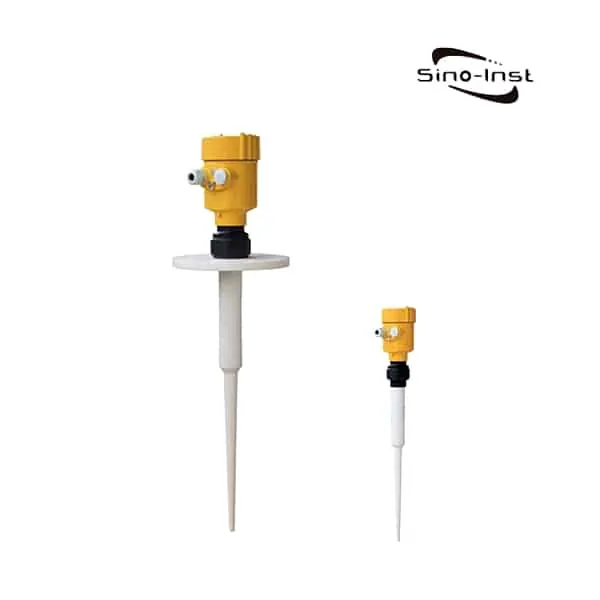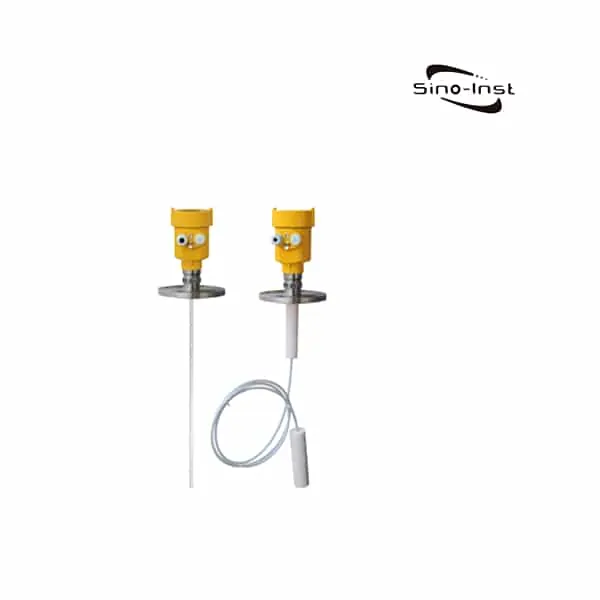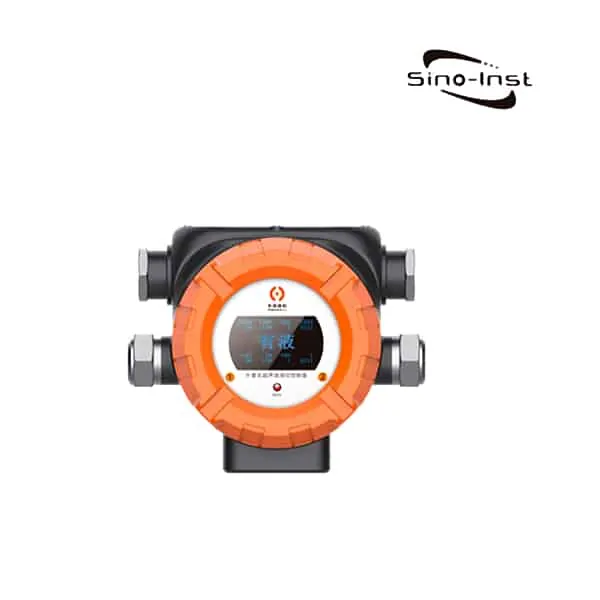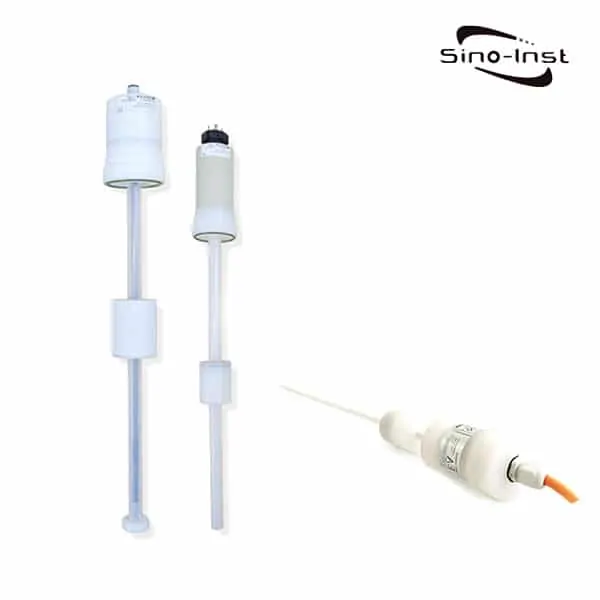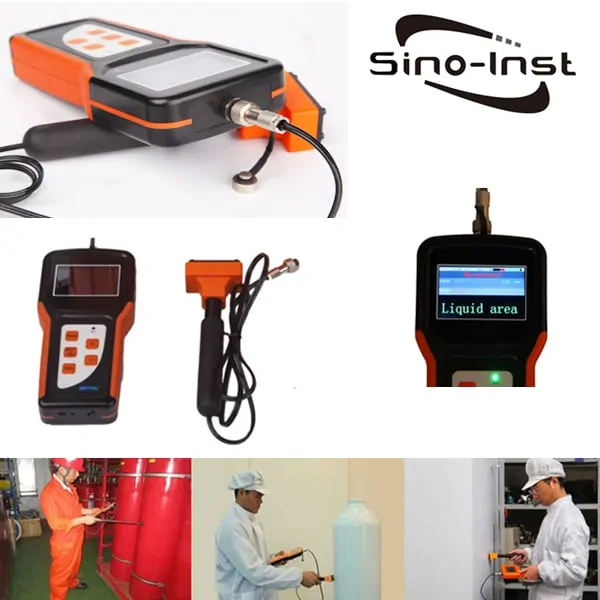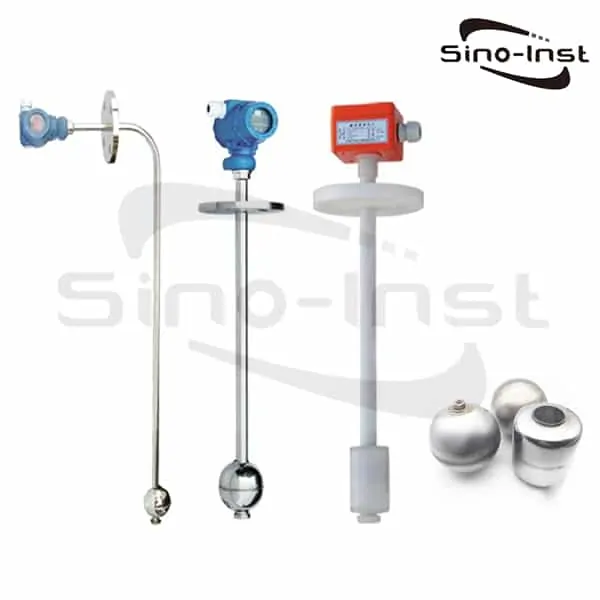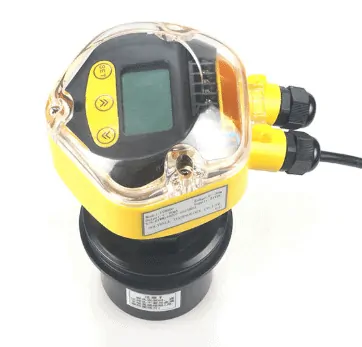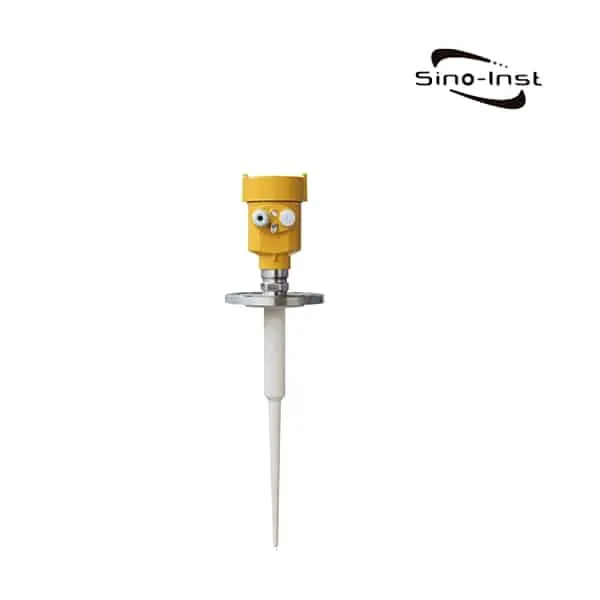
A radar level meter is often used for non-contact continuous level measurement. SIRD-802 Radar Level Sensor is equipped with a rod antenna (PTFE). It is especially suitable for level measurement of corrosive liquids and has special advantages in small containers. encountered in chemical plants. Petroleum storage tanks, chemical storage tanks, chemical storage tanks.
Features of SIRD-802 Radar Level Sensor for Corrosive Liquids
Specifications of SIRD-802 Radar Level Sensor for Corrosive Liquids
| Applicable medium: | liquid, especially suitable for strong corrosive liquid |
| Application: | Pressure level measurement; Sewage level measurement; Volatile acid-base level measurement |
| Explosion-proof certification: | Exia IIC T6 Ga/Exd IIC T6 Gb |
| Measuring range: | 20m |
| Antenna: | Rod antenna (PTFE) |
| Frequency: | 6 GHz |
| Process temperature: | -40~130℃(standard type)/-40~180℃(high temperature type) |
| Measurement accuracy: | ±10mm |
| Process pressure: | (-0.1~1.6)MPa |
| Signal output: | (4~20)mA/HART |
| On-site display: | four LCD programmable |
| Power supply: | Two-wire system (DC24V) Four-wire system (DC24V/AC220V) |
| Repeatability: | ± 1mm |
| Housing: | Aluminum single cavity/aluminum double cavity/plastic/stainless steel single cavity |
| Process connection: | Flange |
Extended Reading: GWR Level Sensor for High Temperature & High Pressure
SIRD-802 Radar Level Sensor for Corrosive Liquids Applications
6GHz radar level sensor is suitable for liquid, paste, granule and block material level and non-contact measurement. Suitable for changes in temperature, pressure. There is an inert gas and volatile.
The measurement method of microwave pulse, can work normally in the industrial frequency band range. The beam energy is low, can be installed on all kinds of metal, non-metallic container or pipe, no harm to human body and environment.
- Power plants: coal piles, raw coal bins, fuel bins, reservoirs, waste gas purification tanks, bin pumps, ash storage, etc.
- Oilfield: crude oil or product oil storage tanks, three-phase separators, sedimentation tanks, sewage tanks (pools), drilling mud tanks, etc.
- Petrochemical: distillation tower, concentration tank, liquefied gas tank, ammonia tank, steam drum, oil refinery oil depot, asphalt tank, etc.
- Chemical industry: distillation tower, raw material and intermediate silo, reaction tank, ammonia tank, toxic liquid tank, solid silo, separator, etc.
- Metallurgy: ore silo, ore crusher, raw material silo, auxiliary silo, blast furnace, alumina powder silo, electrolytic cell buffer tank, etc.
- Cement: stone silos, raw meal silos, cement silos, coal powder silos, slag storage silos, etc.
- Water and water treatment: reservoirs, sewage tanks, water treatment tanks, sedimentation tanks, digestion towers, etc.
- Papermaking: raw material warehouse, storage tower, drying drum, etc.
- Others: food, pharmaceuticals, environmental protection, shipbuilding, etc.
You may like: Wastewater flow measurement
Extended reading: Radar Liquid Level Sensor|Corrosive, steam, volatile liquids
Radar Level Gauge Quick Installation Guide
Tank installation
A standard installation
- The radar antenna cannot tilt to the tank wall.
- In order to minimize temperature effect, at the junction of butt joint flange must use the spring washer.
- The rod antenna launching point must reach out to install pipe.
- The vertical placement of the rod antenna beam direction, don’t let the tank wall.
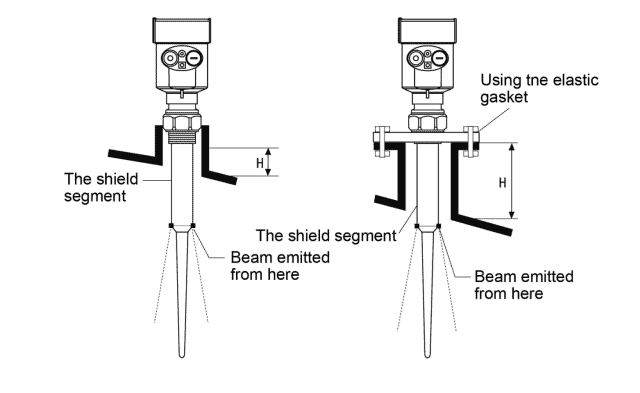
Installation instructions
- The recommended position (2), the outer wall of tank wall to install pipe shall meet the following from the tank wall best distance to tank diameter of 1/4 or 1/6, the minimum distance from the installation of tank wall as the measurement range of 1/10.
- For example: liquid level of storage tank 10m, and the tank wall install the minimum distance of 1m.
- Cannot be installed above the feeding port (4).
- Cannot be installed in the central position (3), if installed in the central, yield multiple false echo, clutter echo will lead to real signal loss.
- If you can’t keep the instrument and the tank wall of the tank wall distance, the medium will adhesion caused by false echo, when debugging instrument should be false echo storage.
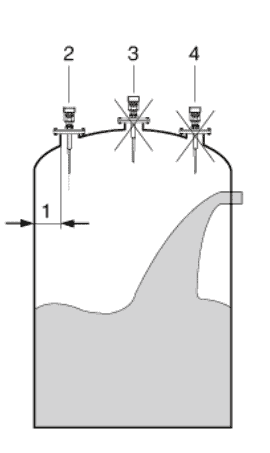
- The top conical tank level, can be installed at the top of the tank is intermediate, can guarantee the measurement to the conical bottom.
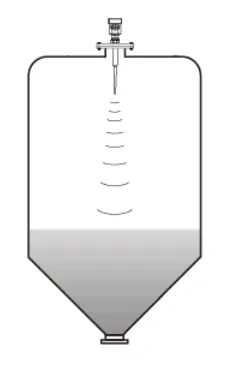
Tank installation instructions
- In the signal beam, should avoid the following installation: Such as: (1) the limit switch, temperature sensor.
- Symmetric devices such as (2): vacuum ring, a heating coil , Baffle plate etc.
- If the tank (1) (2) interference object, should be guided wave tube measurement.

26g Radar Level Meter
The radar level gauge uses a transmission frequency of up to 26G, which has the following advantages over 6G radar:
- The high-frequency radar level meter (mainly 26GHz) has high energy and small beam angle. Generally, the beam angle of a Φ95mm horn antenna is 8º. When the horn antenna diameter of a 6GHz low-frequency pulse radar is Φ246mm, the beam angle is only 15º. The advantages of small antenna size and high precision.
- The wavelength of the 26GHz radar is 11mm, and the wavelength of the 6GHz radar is 50mm. When the radar measures the bulk material level, the radar wave reflection mainly comes from the diffuse reflection of the material surface. The intensity of the diffuse reflection is directly proportional to the size of the material. It is inversely proportional to the wavelength. Most bulk materials The straight length of the material is far less than 50mm. 26GHz radar is the best choice for bulk material level measurement.
- In the application of some small tanks with small diameter and short height. When the medium in the tank or the strong corrosive medium has volatile gas, the effect of ultrasonic measurement is poor. The radar effect is good. The 6GHz radar antenna length (300-400mm) is invisible Increase the blind area (about 600mm). Due to the poor directivity of the 6GHz radar (large opening angle), multipath reflections will occur in a small tank. The 26GHz radar frequency is high and the antenna is short. The directivity is good. It overcomes the shortcomings of the 6GHz radar. Suitable for small tank measurement.
- Due to the harsh site environment, dirt and water vapor will accumulate on the radar antenna over time. The 26GHz radar antenna is small. Adding a radome can greatly improve the impact of dirt and water vapor. The 6GHz radar frequency is low. The antenna size is large. An antenna is added. The cover is very difficult. The overall instrument is large and it is difficult to clean up.
- Due to the good directivity of the 26GHz radar. Many harsh working conditions can be measured by simply isolating the radar outside the container.
- Adopting advanced microprocessor and unique EchoDiscovery echo processing technology. Radar level gauge can be applied to various complicated working conditions.
- Adopting pulse working mode, the transmitting power of the radar level meter is extremely low. It is installed in various metal and non-metal containers. It is not harmful to the human body and the environment.
Extended reading: Radar Oil Tank Level Sensor
Featured Level Measurement Devices for Corrosive Liquids
Extended reading: FMCW Radar Level Transmitter 120GHz
Sino-Inst offers over 10 Radar Level Sensor for Corrosive Liquids level measurement. About 50% of these are Radar level meters, 40% is the tank level sensor.
A wide variety of Radar Level Sensors for Corrosive Liquids are available to you, such as free samples, paid samples.
Sino-Inst is a globally recognized supplier and manufacturer of radar level measurement instrumentation, located in China.

Wu Peng, born in 1980, is a highly respected and accomplished male engineer with extensive experience in the field of automation. With over 20 years of industry experience, Wu has made significant contributions to both academia and engineering projects.
Throughout his career, Wu Peng has participated in numerous national and international engineering projects. Some of his most notable projects include the development of an intelligent control system for oil refineries, the design of a cutting-edge distributed control system for petrochemical plants, and the optimization of control algorithms for natural gas pipelines.


